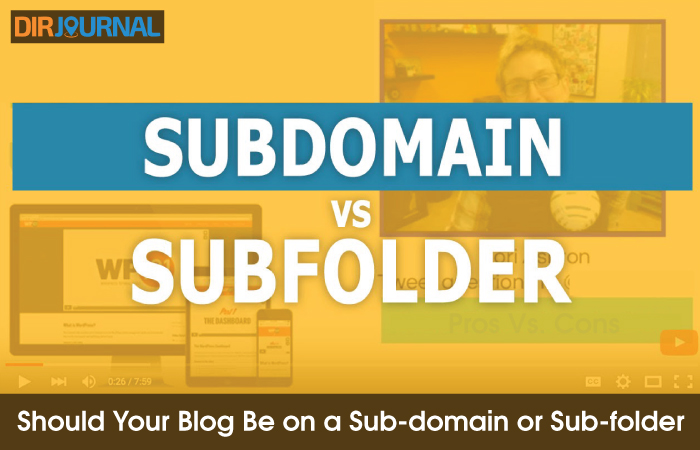The question of whether a blog should be on a sub-domain or sub-folder is one that causes much debate with the Internet marketing world. The simple answer is there’s no universal answer, it depends on a few other variables and what your end goals are. In this article we’ll take a look both sides and explore the pros and cons of both.
Sub-folder Approach
Using a sub-folder is one that is usually advocated by many Internet marketers, especially if they are pro-social media. A sub-folder implementation will look like this http://www.example.com/blog. Here are some of the pros of this approach:
Pros
- Links are built to sub-folder and link equity, domain trust and domain authority are shared over the entire domain.
- A single CMS and template can be used to manage the entire website.
- Blog has a more integrated feel to outside users.
Cons
- If sensitive data is stored in the database any security vulnerabilities can expose the entire database not just blog.
- For strict or rigid corporate cultures getting management and approval of the IT department can be problematic.
- Current web-server configuration and programming language may not be compatible blogging software.
Sub-domain Approach
Use of a sub-domain is generally advocated by any existing legacy IT departments, or conservative management parties. A sub-domain implementation will look like this http://blog.example.com. Here are some pros and cons of this approach:
Pros
- A blog can be located on a separate server providing more secure barriers between blogging databases, and sensitive customer records or other ecommerce information.
- Knowing that the blog is isolated will often give you more editorial leeway from IT departments and management.
- A well linked sub domain can help secure multiple listings allowing a wider penetration of keywords and search listings.
- Allows easier expansion into other vertical areas with additional sub-domains such as http://videos.example.com .
Cons
- Isolated sub-domains don’t transfer link equity, trust, and authority as well as sub-folders.
- Sub-domains have a greater tendency to look and feel separate from the main site. This can lead to a confusing message or perception from customers or users.
- Flagship content usually goes to main website, which doesn’t help grow the blog.
The real answer is that there is no one answer that fits all situations, everything is divided up on a case by case basis. I use wordpress as a primary blogging and CMS platform and from a security standpoint it leaves a lot to be desired. As an SEO I really like consolidating all of my link equity, but I have to weigh that decision against the sensitivity of potentially exposing any confidential customer or company data via hacking. Additionally any link injection hacking on will only affect a sub-domain, so for most of my clients a sub-domain is usually a better choice.








[…] Thanks for visiting!Under most situations the optimal architecture for a blog is to use either a subdomain or sub folder structure. There are additional factors to consider from a security standpoint (tk), but a in most cases […]
Its quite confusing when taking a decision as to prepare blog on a sub-domain or sub-folder.
Sub-domain is counted as different site in search engines eyes and i agree to your point about sub-folders that domain trust is passed on to it.
So i preferred making a blog as sub-folder as it gets the benefit of the main domain trust as well.
Somehow… forum seems to work better on sub-domains and blogs on sub-folders!
As regards the title, 'forum' appears good to me and so also 'board'!